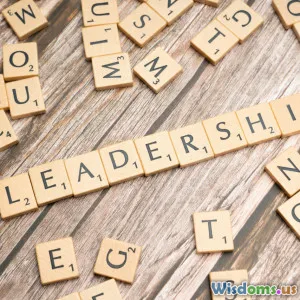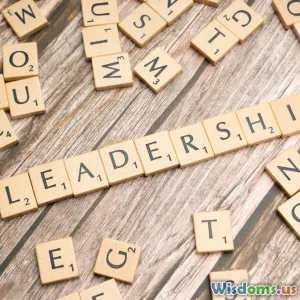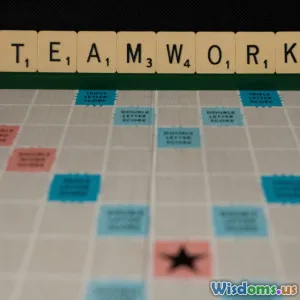
Mastering Conflict Resolution Without Compromising Team Morale
8 min read Discover effective methods to resolve team conflicts while preserving morale and fostering collaboration within your organization. (0 Reviews)
Mastering Conflict Resolution Without Compromising Team Morale
Conflict is an inevitable part of any team environment. When diverse personalities, opinions, and roles intersect, friction is bound to arise. Yet, the true test of leadership and team dynamics lies not in avoiding conflict — but in how it is managed. Successfully navigating disputes without compromising morale requires a nuanced approach that balances assertiveness with empathy, promotes healthy dialogue, and fosters collective growth.
In this article, we'll delve into the art and science of conflict resolution that preserves and enhances team spirit. Through real-world insights, expert advice, and practical techniques, you will learn how to transform inevitable clashes into opportunities for deeper understanding and stronger collaboration.
Understanding the True Nature of Team Conflict
Why Conflict Happens
Contrary to popular belief, not all conflict is negative. Conflict stems from differences — in goals, values, work styles, or perceptions. Harvard Business Review emphasizes that "conflict can stimulate debate and encourage innovative solutions" if managed well.
Some common sources of conflict include:
- Resource scarcity: Competition over time, budget, or personnel.
- Role ambiguity: Unclear responsibilities creating tension.
- Personality clashes: Varied communication styles and temperaments.
- Differing priorities or visions: Divergent ideas about project goals.
Understanding these underlying causes helps teams address conflicts more constructively rather than resorting to avoidance or escalation.
Costs of Poorly Managed Conflict
Research by CPP Inc. (publishers of the Thomas-Kilmann Conflict Mode Instrument) shows employees spend an average of 2.8 hours weekly dealing with conflict, costing U.S. businesses roughly $359 billion annually in lost productivity. Moreover, unresolved disputes often result in disengagement, turnover, and toxic workplace atmospheres.
Conversely, teams that handle conflict effectively experience improved trust, communication, and performance.
The Pillars of Conflict Resolution Without Morale Loss
1. Promote Psychological Safety
Amy Edmondson’s groundbreaking research emphasizes the importance of psychological safety — a climate where people feel safe to speak up without fear of embarrassment or punishment. Establishing this foundation enables teams to address issues openly before grievances fester.
Example: Google’s Project Aristotle found psychological safety as the top dynamic in their most effective teams, helping them tackle conflicts constructively.
To foster psychological safety:
- Encourage openness and humility.
- Model vulnerability by admitting mistakes.
- Value diverse viewpoints.
2. Active Listening and Empathy
Often, conflict escalates because parties feel unheard or misunderstood. Active listening means fully concentrating on the speaker without interrupting, asking clarifying questions, and reflecting back emotions.
Empathy — the ability to understand and share another’s feelings — breaks down barriers and humanizes disagreements.
Real-World Insight: In mediation sessions, mediators who demonstrate empathy often defuse tension and pave the way for collaborative solutions.
3. Clear and Assertive Communication
Assertiveness strikes a balance between passivity and aggression. It involves expressing one's needs and concerns honestly and respectfully.
Key techniques include:
- Using "I" statements (e.g., "I feel concerned when deadlines are missed") to avoid blame.
- Staying specific and objective rather than generalizing.
- Avoiding inflammatory language or sarcasm.
4. Collaborative Problem-Solving
Shifting conflict from a win-lose battle to a shared problem-solving session realigns the team toward common goals. This involves:
- Identifying the issue clearly.
- Brainstorming solutions together.
- Agreeing on actionable steps collectively.
The “Interest-Based Relational (IBR)” approach is a popular model that separates people from problems to address both respectfully.
5. Leveraging Emotional Intelligence (EI)
EI includes self-awareness, self-regulation, motivation, empathy, and social skills — all essential for navigating conflicts. Leaders and team members with high EI can:
- Recognize emotional triggers.
- Manage their own reactions.
- Influence group dynamics positively.
Statistical Insight: According to TalentSmart, emotional intelligence accounts for 58% of performance in all types of jobs.
Practical Steps for Leaders and Teams
Establish Conflict Norms Early
Teams that agree upfront on how to handle disagreements reduce ambiguity and resistance. For instance, a norm might be "Address problems within 24 hours respectfully and directly." or "Use constructive criticism with examples."
Facilitate Structured Conflict Resolution Sessions
Utilize facilitated discussions or conflict coaching sessions where neutral moderators guide dialogue to ensure productive outcomes without personal attacks.
Use Tools and Frameworks
- Thomas-Kilmann Conflict Mode Instrument (TKI): Identifies conflict-handling styles such as competing, accommodating, avoiding, collaborating, and compromising.
- Nonviolent Communication (NVC): Focuses on empathetic communication.
Recognize and Reward Healthy Conflict Behavior
Highlight cases where team members resolve issues effectively, reinforcing positive examples that sustain morale.
Real-World Example: Pixar’s Creative Culture
Pixar Animation Studios is renowned for its collaborative ethos and transparent feedback culture. Ed Catmull, co-founder of Pixar, states: "It’s not the manager’s job to prevent conflict but to create a culture where it’s safe to have disagreements."
Their Braintrust meetings allow candid critiques without hierarchy-induced fear. As a result, creativity flourishes and team members feel respected — a prime illustration that conflict can invigorate rather than demoralize.
Pitfalls to Avoid
- Ignoring underlying issues: Surface resolution without deeper exploration only postpones conflict.
- Suppressing dissent to keep peace: This risks resentment and disengagement.
- Allowing personalization: Attack on people rather than ideas must be curtailed promptly.
Conclusion
Mastering conflict resolution without compromising team morale is both a science and an art. It requires deliberate cultivation of trust, communication skills, empathy, and structured processes. When done well, it transforms conflict from a source of division into a catalyst for innovation, stronger relationships, and greater team cohesion.
By adopting the strategies highlighted here, leaders and teams can turn inevitable disagreements into powerful growth moments — keeping morale high and collaboration thriving.
Are you ready to reframe conflict as a tool for unity and progress in your organization?
References
- Harvard Business Review (HBR) – The Right Way to Manage Conflict at Work
- CPP Global (Thomas-Kilmann Conflict Mode Instrument)
- Google Re:Work – Psychological Safety and High-Performing Teams
- TalentSmart – Emotional Intelligence and Performance
- Ed Catmull, Creativity, Inc.
Empower your team through mindful conflict resolution and elevate your organizational culture today.
Rate the Post
User Reviews
Popular Posts



















